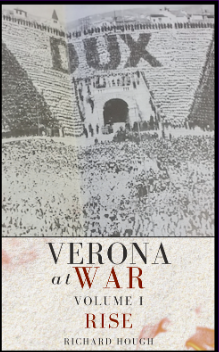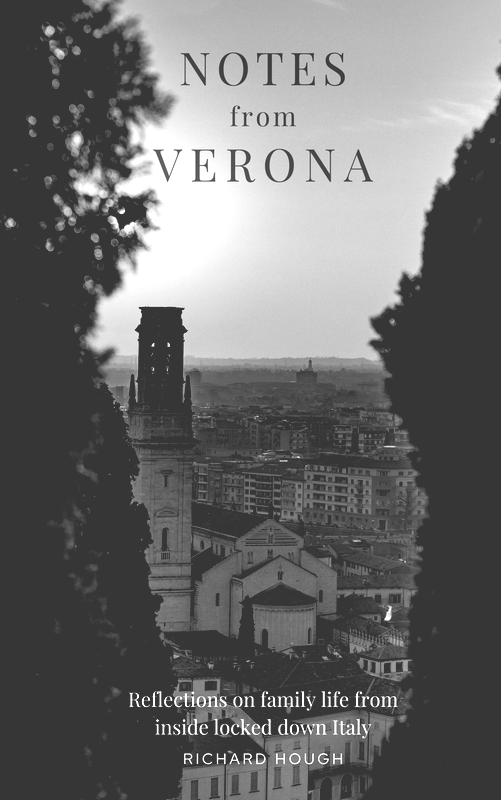|
We pass by Modena often enough, usually on our way to the dramatic mountain pass that takes us to the northern Tuscan region of Garfagnana. But as we are primarily concerned with arriving at our final destination (the sleepy mountain village of Corfino) in the shortest possible time, we have never quite managed a pitstop at this ancient town in Emilia-Romagna (as tempting as the many signs for the Ferrari museum have been). Finally though, a visit from Uncle Pelle (an enthusiastic petrolhead) , inspires us to make Modena our final destination (rather than simply a staging post on the way somewhere else). In truth I thought the museum was out of town, so was pleasantly surprised to find it conveniently located not far from the city's historic old town (there are, in fact, two museums - the Museo Enzo Ferrari in centre of Modena and the Museo Ferrari at Maranello). The Museo Enzo Ferrari is our primary objective and first port of call. It is located on the site of the house where Enzo Ferrari was born in 1898. It tells the remarkable story of Enzo Ferrari's life, from humble origins to revered head of that most iconic vehicle brand that bears his name. Next door, a slick curvaceous modern building, painted in bright ‘Modena yellow’, is like some kind of fantasy showroom, full, even to my dispassionate eye, of some of the most amazing motor vehicles ever manufactured. For anyone with a passion for cars, the museum is not to be missed. Even for a sandal-wearing cyclist like me, the vehicles are jaw-dropping and Enzo's story, from humble origins, to motor-racing champion, mechanical engineer, designer and entrepreneur, is delightfully told. Modena is as authentic a taste of northern Italy as you'll find anywhere in, well, northern Italy. With it's incredible industrial heritage, proud military traditions and cultural and architectural richness , it's a great town to just wander, stopping here and there for a coffee or aperitivo. Small enough to feel intimate, but large enough to explore, it lacks the throngs of tourists that its more famous neighbours boast and, thanks to its pedestrianised cobbled streets, the pace of the old town feels elegantly serene. Even the municipal refuse receptacles are tastefully designed and elegant.
Of course Modena is also one of Italy's unsung culinary gems, home to balsamic vinegar (we are easily persuaded to part with €25 for an 8 year old condimento speciale), Lambrusco wine and giant tortelloni. Having spent the morning in the museum we embark on a rather desperate search to avoid the impending crisis di fame that is just about to beset our young children. Somewhat fortuitously, we stumble across Trattoria via Ferrari. We ask for a selection of local antipasti, which include baccala fritto, calzagatti con lardo di colonnata and gnocchi fritti e culaccia - all fresh, light and delicious! Then the kids share a massive cotoletto and Uncle Pelle and Mrs H have the giant tortelloni. I have steak - my polite request to have it well done is discreetly mocked and ultimately refused by our friendly, but insistent, waiter. Washed down with a half carafe of local red, it was a very pleasant lunch, and just about complied with our various dietary requirements (see winter lurgy, Whole Life Challenge, fussy kids). Fuelled and rested, we set off on our impromptu tour of the city. Although there is plenty to explore, in the interests of brevity I'm going to mention just two things that caught my eye. The first is the prestigious Accademia Militare di Modena. Located in the grand Palazzo Ducale in the historic centre of the city, it was the world's first dedicated military academy and has been training Italian military leaders since the 1 January 1678. The building is both an imposing statement of military prowess and tradition and sombre reminder of the high price of war, with long lists of fallen alumni dating back centuries. The second sight that struck me was the shrine at the foot of the Tower Girlandina. Centrally located in Piazza delle Torre, this moving tribute consists of 1,174 black and white photos of all those partisans from Modena who fell during the Second World War. It is a stark and moving reminder of the terrible human price paid for victory over fascism. In fact, the memorial was a spontaneous manifestation of a city's grief. Immediately after the liberation, the people of Modena began to post photographs of missing relatives at the foot of the city's central tower, hoping that someone would be able to give them some news. As time passed, the shrine became an official monument to the fallen partisans. After the war, Modena was awarded the Medaglia d'Oro al Valor Militare for the sacrifices it's citizens made during the resistance struggle for liberation. With the children in tow and so much to see, we barely scratched the surface of Modena's cultural, historical and architectural treasures. So, I'm already looking forward to my next visit, when we can again explore this fascinating little town. |
AboutRichard Hough writes about history, football, wine, whisky, culture + travel and is currently working on a trilogy about wartime Verona.
|



